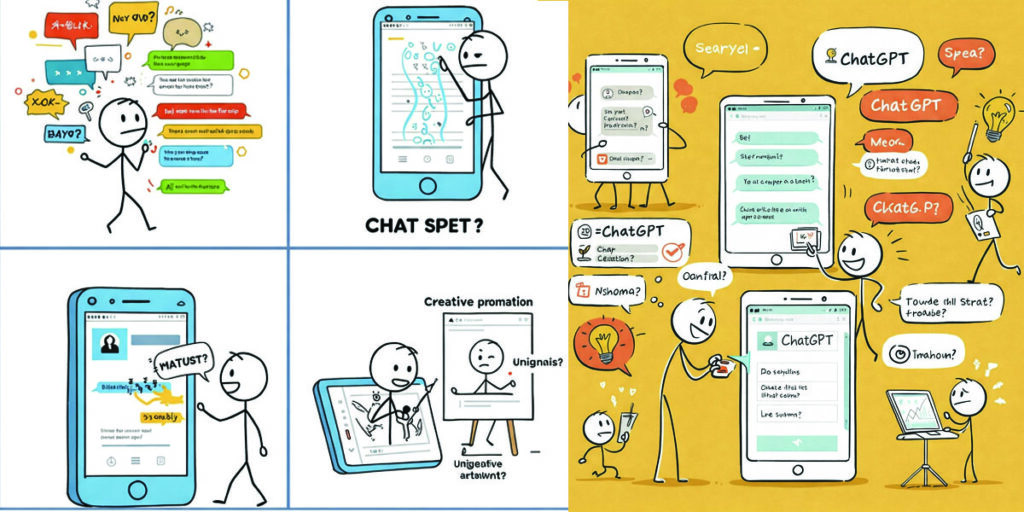AI research assistant that helps with academic literature review and data extraction.
In the burgeoning landscape of artificial intelligence, a new class of tools is emerging, poised to revolutionize the way researchers and academics engage with the vast and ever-expanding body of scholarly literature. Among these innovative solutions stands Elicit, an AI research assistant specifically designed to streamline the often-arduous processes of academic literature review and data extraction. To truly appreciate the significance and potential impact of Elicit, it is crucial to delve into the historical context of information management in academia, understand the economic forces driving the demand for such tools, and explore the intricate networking dynamics that facilitate their development and adoption.
A Historical Perspective: The Evolution of Academic Research and Information Management
The pursuit of knowledge has always been intrinsically linked to the ability to access, organize, and synthesize existing information. From the meticulously handwritten scrolls of ancient libraries to the advent of the printing press, which democratized access to knowledge on an unprecedented scale, the history of academic research is punctuated by transformative shifts in how information is managed and disseminated.
The 20th century witnessed an exponential growth in scholarly output, fueled by increasing specialization, collaborative research endeavors, and the proliferation of academic journals and conferences. This information explosion presented both immense opportunities and significant challenges. Researchers faced the daunting task of sifting through mountains of literature to identify relevant studies, synthesize findings, and extract crucial data points. Traditional methods, relying heavily on manual searching, reading, and note-taking, became increasingly time-consuming and inefficient.
The latter half of the 20th century saw the rise of digital databases and search engines, such as JSTOR, PubMed, and Google Scholar. These tools offered a significant improvement in accessibility, allowing researchers to quickly locate relevant articles based on keywords and citation information. However, the fundamental challenges of comprehensive review and efficient data extraction persisted. Researchers still had to manually read and interpret numerous articles, often struggling to identify key findings, methodologies, and data points in a consistent and systematic manner.
The early 21st century ushered in the era of big data and advanced computational capabilities. This technological landscape paved the way for the development of sophisticated AI-powered tools capable of processing and understanding vast amounts of textual data. Elicit represents a significant step in this evolution, leveraging natural language processing (NLP), machine learning (ML), and other AI techniques to address the persistent challenges of academic literature review and data extraction. By automating and augmenting these critical research tasks, Elicit promises to unlock new levels of efficiency and insight in the academic world.
Economic Market Drivers: The Growing Demand for Efficiency and Insight in Academic Research
The development and adoption of AI-powered research assistants like Elicit are not solely driven by technological advancements; they are also fueled by compelling economic market forces within the academic and research sectors. Several key factors contribute to the increasing demand for tools that enhance efficiency and extract deeper insights from academic literature:
1. Increasing Research Output and Specialization: As mentioned earlier, the sheer volume of academic publications continues to grow exponentially across diverse fields. This information overload makes it increasingly challenging for researchers to stay abreast of the latest findings and conduct comprehensive literature reviews. Furthermore, the increasing specialization within academic disciplines necessitates the ability to efficiently identify and synthesize knowledge from a highly fragmented landscape of research. Tools like Elicit offer a solution by enabling researchers to process and understand large volumes of literature more quickly and effectively, saving valuable time and resources.
2. The Pressure to Publish and Secure Funding: In the highly competitive academic environment, researchers face constant pressure to publish high-impact research and secure funding for their projects. Conducting thorough and well-informed literature reviews is a crucial prerequisite for both these endeavors. A strong literature review demonstrates a researcher’s understanding of the existing knowledge base, justifies the novelty and significance of their proposed research, and strengthens their grant applications. Elicit can significantly expedite the literature review process, allowing researchers to dedicate more time to conducting experiments, analyzing data, and writing publications, thereby enhancing their productivity and competitiveness.
3. The Growing Importance of Interdisciplinary Research: Many of today’s most pressing scientific and societal challenges require interdisciplinary collaboration, bringing together experts from diverse fields. However, navigating the disparate literatures and methodologies of different disciplines can be a significant hurdle. Elicit’s ability to process and synthesize information across various domains can facilitate interdisciplinary research by helping researchers quickly understand the relevant literature in related fields and identify potential synergies and collaborations.
4. The Need for Evidence-Based Decision Making: Beyond academia, the demand for evidence-based decision-making is growing in various sectors, including government, healthcare, and industry. Academic research often provides the foundational evidence for informed policy decisions and innovative solutions. Tools like Elicit can help bridge the gap between academic research and practical application by making it easier to extract and synthesize relevant findings for policymakers and practitioners.
5. Cost Efficiency in Research Institutions: Academic institutions are constantly seeking ways to optimize their research processes and maximize the return on their investment. By reducing the time and effort required for literature review and data extraction, Elicit can contribute to cost efficiency by freeing up researchers’ time for other critical tasks and potentially reducing the need for extensive research support staff dedicated to these activities.
In essence, the economic market for AI-powered research assistants like Elicit is driven by the fundamental need to enhance research productivity, improve the quality and impact of academic work, facilitate interdisciplinary collaboration, and support evidence-based decision-making in a world increasingly saturated with information.
Networking Dynamics: The Collaborative Ecosystem Driving AI Innovation in Academia
The development and adoption of AI tools like Elicit are not isolated phenomena; they are deeply embedded within a complex and dynamic network of researchers, developers, institutions, and funding agencies. Understanding these networking dynamics is crucial to appreciating the trajectory and potential of such innovations:
1. Academic Research Communities: The initial impetus for tools like Elicit often stems from the direct experiences and needs of academic researchers themselves. Computer scientists and information science researchers, working in collaboration with domain experts from various disciplines, identify the bottlenecks and inefficiencies in current research practices and envision AI-powered solutions. This close interaction between AI developers and end-users is crucial for ensuring that the tools developed are relevant, user-friendly, and address real-world research challenges.
2. University Research Labs and Centers: Universities play a pivotal role in fostering the development of AI-powered research tools. Computer science departments, AI research labs, and interdisciplinary research centers provide the infrastructure, expertise, and collaborative environment necessary for the conception, development, and testing of such innovations. These institutions often serve as early adopters of these tools, providing valuable feedback and contributing to their refinement.
3. Technology Startups and Companies: The commercialization and wider dissemination of AI-powered research assistants often involve technology startups and established companies. These entities possess the resources and expertise to translate academic prototypes into robust and scalable software solutions. They play a crucial role in developing user interfaces, providing technical support, and marketing these tools to the broader academic community.
4. Funding Agencies and Foundations: Government agencies, private foundations, and other funding bodies play a critical role in supporting the development and adoption of innovative research tools. Grants and funding initiatives can provide the financial resources necessary for research and development, pilot projects, and the dissemination of these technologies within the academic community.
5. Open Science and Data Sharing Initiatives: The growing movement towards open science and the increasing availability of research data and publications through open access repositories create a fertile ground for AI-powered research assistants. These tools can leverage the vast amounts of openly available data to train their algorithms and provide more comprehensive and insightful analyses.
6. Scholarly Publishing and Database Providers: Scholarly publishers and database providers are also key players in this network. They control access to a significant portion of academic literature and are increasingly exploring ways to integrate AI-powered tools into their platforms to enhance search functionality, facilitate data extraction, and provide value-added services to researchers.
7. Conferences and Workshops: Academic conferences and workshops serve as important networking platforms where researchers, developers, and industry representatives can connect, share ideas, and showcase the latest advancements in AI-powered research tools. These events facilitate collaboration, knowledge transfer, and the dissemination of best practices.
In essence, the development and adoption of Elicit and similar AI research assistants are driven by a collaborative ecosystem where academic researchers identify needs, university labs foster innovation, technology companies provide scalability, funding agencies offer support, open science initiatives provide data, publishers explore integration, and conferences facilitate networking and knowledge exchange. This interconnected network is crucial for the continued evolution and widespread adoption of these transformative tools in the academic landscape.
Elicit in Detail: Features and Functionality
Elicit, developed by Ought, is an AI research assistant that aims to streamline the process of academic literature review and data extraction. It leverages a sophisticated AI model to understand research questions, identify relevant papers, summarize findings, and extract key information in a structured format. Some of its key features and functionalities include:
1. Question Answering: Users can pose specific research questions in natural language, and Elicit will search its database of academic papers to find relevant answers and supporting evidence. Unlike traditional keyword-based search engines, Elicit understands the semantic meaning of the question, allowing for more nuanced and relevant results. For example, a user might ask, “What are the common side effects of this medication?” and Elicit will identify papers that specifically address this question.
2. Literature Review Summarization: Elicit can automatically summarize the key findings, methodologies, and conclusions of multiple research papers related to a specific topic. This feature saves researchers significant time and effort in synthesizing information from numerous sources. The summaries are designed to be concise and informative, providing a quick overview of the relevant literature.
3. Data Extraction: Elicit can extract specific data points from research papers, such as sample sizes, intervention details, outcome measures, and statistical results. This feature is particularly useful for conducting meta-analyses or systematic reviews, where researchers need to collect and synthesize quantitative data from multiple studies. Elicit can present this extracted data in a structured format, such as tables or spreadsheets, facilitating further analysis.
4. Identifying Key Papers and Authors: Elicit can help researchers identify seminal papers and influential authors in a particular field. By analyzing citation networks and identifying highly cited works, Elicit can guide researchers to the most important contributions in their area of interest.
5. Finding Related Work: Based on a given paper or research question, Elicit can suggest related articles that might be of interest. This feature helps researchers broaden their search and discover relevant work that they might have missed through traditional search methods.
6. Argument Extraction: Elicit can identify and extract the main arguments and supporting evidence presented in research papers. This feature can be valuable for understanding the different perspectives and debates within a specific research area.
7. Hypothesis Generation: In some cases, Elicit can even assist with hypothesis generation by identifying gaps in the existing literature or suggesting potential avenues for future research based on the patterns and relationships it detects in the data.
Underlying Technology: Elicit is powered by a large language model (LLM) that has been trained on a vast corpus of academic text. This model enables Elicit to understand the nuances of academic language, identify key concepts, and extract relevant information. The platform also utilizes various NLP techniques for tasks such as text summarization, named entity recognition, and relationship extraction.
Potential Benefits and Challenges of Elicit
The adoption of AI-powered research assistants like Elicit holds significant potential benefits for the academic community:
Benefits:
- Increased Efficiency: Automating literature review and data extraction can save researchers countless hours, allowing them to focus on higher-level tasks such as research design, data analysis, and writing.
- Improved Comprehensiveness: AI tools can process and analyze a much larger volume of literature than a human researcher could manage manually, potentially leading to more comprehensive and less biased literature reviews.
- Enhanced Accuracy: Automated data extraction can reduce the risk of human error and ensure consistency in the collection and synthesis of information.
- Facilitation of Meta-Analysis and Systematic Reviews: Elicit’s data extraction capabilities can significantly streamline the process of conducting meta-analyses and systematic reviews, which are crucial for evidence-based research.
- Support for Interdisciplinary Research: By making it easier to navigate the literature of different fields, Elicit can facilitate collaboration and knowledge sharing across disciplines.
- Democratization of Research: AI-powered tools can potentially lower the barriers to entry for researchers with limited resources or experience in conducting comprehensive literature reviews.
Challenges:
- Accuracy and Reliability: While AI models are becoming increasingly sophisticated, they are not infallible. There is a risk of errors in summarization, data extraction, or interpretation, which could lead to flawed conclusions if not carefully reviewed by human researchers.
- Bias in Training Data: The performance of AI models is heavily influenced by the data they are trained on. If the training data contains biases, these biases could be reflected in the output of the AI tool.
- Loss of Nuance and Context: AI models may struggle to fully grasp the nuances of academic language, the context of research findings, or the subtle differences in methodologies. Human researchers are still needed to provide critical evaluation and interpretation.
- Over-Reliance and Deskilling: There is a concern that over-reliance on AI tools could lead to a decline in researchers’ critical reading and information synthesis skills.
- Data Privacy and Security: Accessing and processing large volumes of academic literature may raise concerns about data privacy and security, particularly if the tools are integrated with institutional databases.
- Cost and Accessibility: The cost of developing and accessing advanced AI-powered research assistants could create disparities within the academic community, potentially disadvantaging researchers at institutions with limited resources.
The Future Landscape: AI as a Collaborative Partner in Academic Research
Looking ahead, AI research assistants like Elicit are likely to become increasingly integrated into the academic research workflow. Rather than replacing human researchers, these tools are poised to act as powerful collaborators, augmenting human capabilities and freeing up researchers to focus on the most critical and creative aspects of their work.
Future developments in this field may include:
- More Sophisticated Natural Language Understanding: AI models will continue to improve their ability to understand the complex language and reasoning found in academic literature.
- Enhanced Data Integration: Tools may be able to seamlessly integrate data extracted from literature with other research data sources, facilitating more comprehensive analyses.
- Personalized Research Assistance: AI assistants could be tailored to the specific research interests and needs of individual users, providing more targeted and relevant support.
- Integration with Scholarly Communication Platforms: AI tools may be integrated directly into scholarly publishing platforms, facilitating literature discovery, review, and data sharing.
- Ethical Considerations and Guidelines: As AI becomes more prevalent in research, it will be crucial to develop ethical guidelines and best practices for its use, ensuring transparency, accountability, and responsible innovation.
Elicit represents a significant advancement in the application of artificial intelligence to the challenges of academic literature review and data extraction. Rooted in the historical evolution of information management, driven by compelling economic market forces, and fostered by a collaborative networking ecosystem, Elicit and similar tools hold the promise of transforming the way researchers engage with scholarly knowledge. While challenges remain regarding accuracy, bias, and the potential for over-reliance, the future landscape of academic research is likely to be one where AI serves as an indispensable partner, empowering researchers to navigate the ever-expanding universe of knowledge with greater efficiency and insight.




















